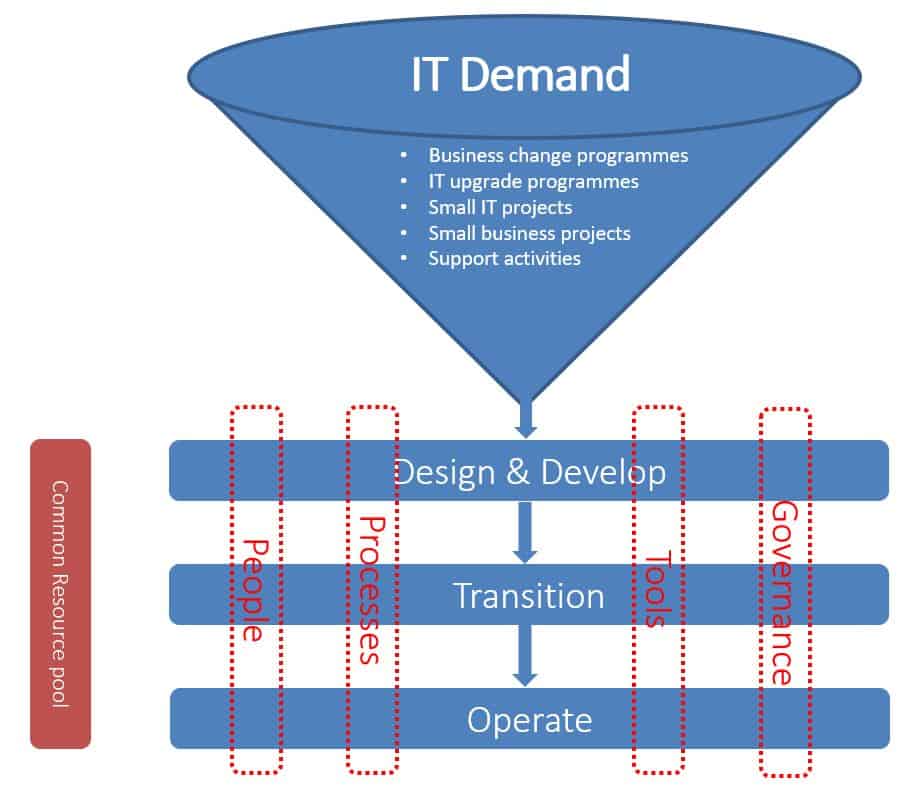Is your IT service desk and wider IT support team at breaking point? I mean really over-stretched, ridiculously busy. Where people are working long hours and are probably stressed – with this affecting IT support team morale, the level of human errors, and your customer satisfaction (CSAT) scores. If so, then please read on. I might have the answer for you….
Getting demand management, service design, and service transition right
What no talk of ITIL v3’s service operation – the home of incident management and service request fulfillment? If you’re worried about stepping outside your IT service management (ITSM) comfort zone, then I recommend that you start with my earlier blog, “How good is your service definition, design, and transition?”
In this article, I’ve focused on the effects of poor demand management, service design, and service transition processes on the IT support team. It’s an issue that has recently been highlighted as a result of some work we’re doing for a client to help them to define a new IT Operating Model.
Here, one of the key elements which we’ve found to be missing is the capture of all new work coming into the organization – I’ll call this the “demand.”
Dealing with your IT organization’s demand, including for your IT support team
It’s critical that all potential aspects of demand on IT support team resources’ time are captured in one place. To achieve this, you may wish to categorize the types of demand. As an example, for the client I’ve already referred to, we’ve used the following demand types:
- Business change programs
- IT upgrade programs
- Small IT projects
- Small business projects (enhancements, bug fixes, etc.)
- Support activities.
You’ll, of course, need to adapt this demand-type list for your own organization’s needs.
Visualizing the demand funnel
The diagram below depicts the demand “funnel,” and then some fairly rudimentary stages that new work goes through in most organizations.

Understanding the common issues with the demand funnel
If any element of these stages fails to operate effectively, there’ll be issues. Hence, there are some key points to consider in how this all works.
For example, poor service design often results in:
- Project delays– as build timescales are elongated, test cycles fail, and retrofitting/redesigning takes place
- Service unreliability, poor performance and/or unavailability
- Increased overhead on the IT support team as they struggle to manage unstable services.
Whereas poor service transition often results in:
- The quality of the service being transitioned falling below operability and supportability expectations, standards, and service level agreement (SLA) specifications
- An increased overhead on your IT support team to manage unstable services.
You might have noticed that poor service design and service transition share a common result – the increased overhead on your IT support team to manage unstable services.
Bringing this back to your IT support team (and it being at breaking point)
The solution here is a little similar to problem management – where, rather than continuing to firefight the same IT issues, effort is applied to reducing or eliminating the root cause (or causes).
So, in order to improve efficiency and effectiveness of your IT support team, we need to look upstream of their normal work, into the world of demand, design, and transition. Where fixing any deficiencies in these areas – such as my examples above – will create greater capacity in the IT support team (and addressing the factors that are pushing them to their breaking point) and improve service reliability, leading to an improved end-user experience and higher overall satisfaction with both IT service delivery and the IT support team.
You can read more about this in: Learn how we design and build highly effective IT operating models.
Hopefully, my article has given you food for thought on how to ease the pressure on your IT service desk and wider IT support team. If you’d like to discuss your specific challenges with one of the team at Syniad IT, please head over to www.syniaditsolutions.co.uk/contact
Want more? Here are informative ITIL 4 service value system and ITIL 4 service value chain articles.

